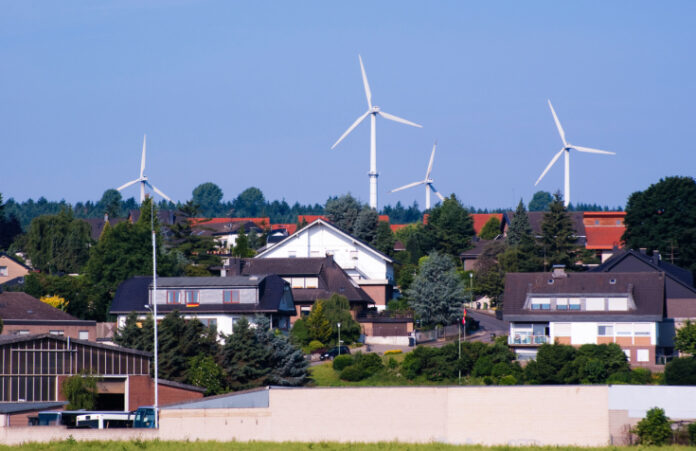Residents in rural states and in more densely populated coastal states are increasingly adopting regulations to block large-scale industrial renewable energy projects, within or near their jurisdictions, says a recent study by the Center of the American Experiment (CAE).
The report, by Robert Bryce, a visiting fellow at the Foundation for Research on Equal Opportunity, suggests large scale government efforts to expand the number and size of renewable energy facilities, will likely flounder in the face of local opposition.
Big Green Energy Requires Big Land
The Biden Administration’s “Energy Efficiency and Clean Energy Standard,” for example, seeks to add “millions of solar panels — including utility-scale, rooftop and community solar systems — and tens of thousands of wind turbines,” across the United States.
A December 2020 study by the Andlinger Center for Energy and the Environment at Princeton University estimates getting to “net-zero emissions” by the midpoint of this century would necessitate converting 228,000 square miles of territory into solar and wind facilities. Bryce notes this would be the equivalent of covering the entire states of California and Washington with solar panels and wind turbines.
Bryce’s paper shows ambitious goals for expanding renewable energy generation may never come to fruition because of local pushback.
Big Push Back on Big Renewables
More than 300 governmental entities in 31 states have either restricted or outright rejected wind energy projects since 2015, due to health concerns from noise and light pollution, the loss of property value, tourism losses, concerns over harms to wildlife, and in order to protect view sheds.
The 31 states are Alabama, California, Hawaii, Iowa, Idaho, Illinois, Indiana, Kansas, Massachusetts, Maryland, Maine, Michigan, Minnesota, Missouri, North Carolina, North Dakota, Nebraska, New Hampshire, Nevada, New York, Ohio, Oklahoma, Oregon, Pennsylvania, Rhode Island, South Dakota, Tennessee, Texas, Virginia, Vermont, and Wisconsin.
Localities have imposed various types of rules in an attempt to block or limit large scale wind and solar projects. These policies range from straightforward methods like regulating noise limits and turbine height, and requiring minimum setbacks from buildings and dissenting landowners, to more creative methods such as Minnesotans grouping together to sell wind rights to conservation holding companies or a county in Michigan building a series of heliports around the county because turbines cannot be built near heliports for safety reasons.
“Lots of people like the idea of renewable energy, but very few people want to live near or see 500- or 600-foot-high wind turbines.” Bryce told Environment & Climate News, “No one wants to sit on their porch after a long day at work, and see forests of giant spinning machines with their red-blinking lights all night, every night, for the rest of their lives.
“The negative health impacts that can be caused by wind turbine noise are real, and the refusal by major media outlets to cover the problem is scandalous,” said Bryce.
‘Communities … Looking for a Champion’
Local peoples and governments are increasingly seeking help to block the siting of new industrial renewable energy projects in their communities, says Isaac Orr, a policy fellow with CAE.
“Rural communities in the Midwest are looking for a champion against these large industrial energy projects,” said Orr. “Our organization has received numerous calls and emails asking for hundreds of copies of Bryce’s report, and asking how they can also organize against these projects.
“I have personally talked to people who left their homes in Wisconsin due to having industrial wind turbines nearby when I worked in the Wisconsin state senate in 2011,” Orr said. “They’re not kooks or conspiracy theorists, they are real people who are being negatively affected by these installations.”
‘Won’t Solve Climate Change’
Expanding large scale green energy projects won’t prevent climate change but it will harm people and the environment, says Bryce.
“Paving rural America with renewable energy infrastructure won’t solve climate change,” Bryce said. “It will, however, cost trillions of dollars, create visual blight on landscapes across the country, kill untold numbers of bats and birds, cause more negative human health impacts, and lead to more economic pain in rural America.
“My research indicates land-use conflicts will prevent any wholesale effort to convert the domestic economy to renewables,” said Bryce.
Tim Benson (tbenson@heartland.org) is a policy analyst at The Heartland Institute.
Internet Info
Robert Bryce, “Not In Our Backyard: Rural America Is Fighting Back Against Large-Scale Renewable Energy Projects,” Center of the American Experiment, April 21, 2021; https://www.heartland.org/publications-resources/publications/not-in-our-backyard-rural-america-is-fighting-back-against-large-scale-renewable-energy-projects



























 EV Dangers Daily Becoming More Evident...
EV Dangers Daily Becoming More Evident...
[…] Link: https://heartlanddailynews.com/2021/06/counties-and-towns-fighting-industrial-wind-and-solar-project…? […]
[…] Link: https://heartlanddailynews.com/2021/06/counties-and-towns-fighting-industrial-wind-and-solar-project…? […]